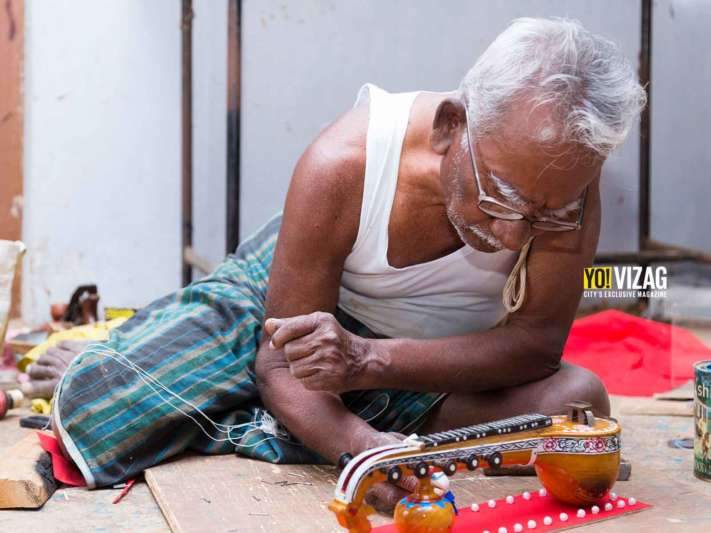

music and bobbili veena
The music from the strings of a Bobbili Veena, seems to call for awakening the dying art of making these instruments. Jaya Siva Murty interacts with Achyuta Narayana of Gollapalli, one of the master-craftsmen at this village.
The Saraswati Veena, is a traditional plucked string instrument with a rich history. Hailing from the town of Bobbili where it is painstakingly created, a glimpse into the past shows that the kings of Bobbili were extremely fond of music. Along with promoting the creation of the veena, many even learnt to play the instrument. With their origin dating back to the 17th century, these veenas are played in a unique style, which also led to the coinage of the ‘Bobbili Veena Sampradayam’.
Achyuta Narayana belongs to the fifth generation of a family of craftsmen making the Bobbili Veena. In fact, his ancestors were involved in this work for 150 years, with his forefathers having crafted the instruments for the kings. Making each of these instruments isn’t an easy process and each veena takes up till a month for creation. ‘We need to use jack-wood to make the ‘veena’, he tells us, the reasons being its light weight, and unique wood-grains that render the quality of ‘swara’. Added to that are the elements of thickness and strength, which make this selection important. A single piece of wood is used to create the instrument giving it the name ‘ekandi veena’.
Talking about markets today, he shares that in the old days, not just the royal families, but many others would learn the veena and buy their instruments from the region. However the current era sees a paradigm shift as compared to the past. Achyuta Narayana says that unfortunately today the buyers are dwindling. With the reasons ranging from lesser promoters for the traditional Bobbili veena to growing technology options that offer these instruments at lesser costs, the future of the craft seems bleak. As a result, the next generation is reluctant to take up this work, he shares. ‘While they are learning the art of making veenas, they are focusing on more lucrative work options, as this in itself doesn’t fetch good income.’
To stay in tune with the times, this Bobbili master-craftsman and many others along with him, have started creating miniature veenas. Made to scale, using the same methods that are adhered to for the larger instruments, these versions are preferred by many. ‘While these aren’t easy to play, they are great as gifts and many buy them as showpieces for their homes.’ These miniatures of the veena along with those of other musical instruments are sent to Lepakshi from where they are sold to customers.
With the town having been granted a geographical indication (GI) tag for the unique instruments created here, the craft is in need for revival, and we at Yo! only hope that the age-old craft of making these instruments stays alive.
This post was last modified on 04/03/2018 11:35 am
In a significant push to strengthen healthcare access in underserved regions, the Employees' State Insurance…
Just days after the no-confidence motion against Mayor Golagani Hari Venkata Kumari was passed, another…
Andhra University is set to begin its 100th anniversary celebrations on April 26, marking the…
If you’re not already hooked on K-dramas, it’s time to ask yourself: what are you…
Andhra University, the heartbeat of Vizag’s student life, stands tall not just as one of…
To accommodate the increased passenger traffic during the summer season, Indian Railways has announced the…
Leave a Comment